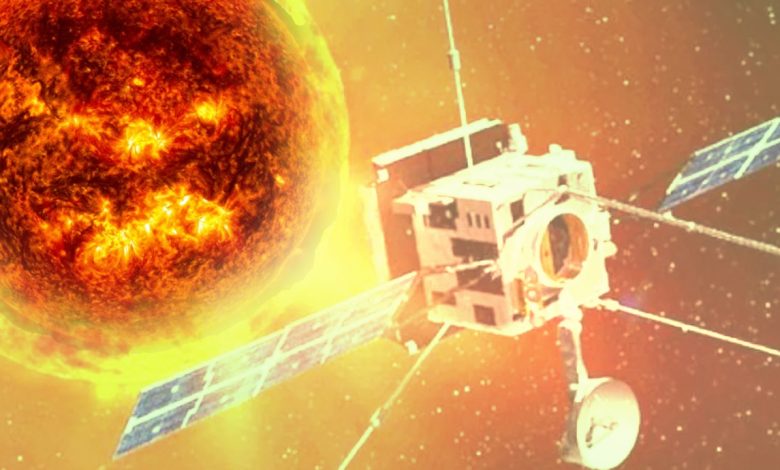Daily Current Affairs for UPSC
India’s first mission to study the Sun
Topic- Science and Technology [GS Paper-3]

Context- The Indian Space Research Organisation (ISRO) is planning to launch the Aditya-L1 mission by this year.
Key Highlights
- Aditya-L1 is the first Indian space mission to be launched for observing the Sun and the solar corona.
- ISRO chairman S. Somanath, speaking at the handover ceremony of the Visible Line Emission Coronagraph (VELC) payload, stated that the Aditya-L1 mission will be launched by June or July as the launch window for the mission would close by August.
- The Aditya-L1 mission will be launched by ISRO to the L1 orbit, which is the first Lagrangian point of the Sun-Earth system as L1 orbit allows Aditya-L1 to look at the Sun continuously.
- In total Aditya-L1 has seven payloads, of which the primary payload is the Visible Emission Line Coronagraph (VELC), that is designed and fabricated by the Indian Institute of Astrophysics, Bengaluru.
Significance of the study
- The other six payloads are developed by the ISRO and other scientific institutions.
- Understanding the effect of the Sun on the Earth and its surroundings has become very important and Aditya-L1 aims to shed light on this topic.
- It has taken about 15 years for VELC from concept to completion, and this period was needed for a complex system like this. The VELC has been the finest collaboration between the IIA and the ISRO.
- Following the handover of the VELC payload, the ISRO will conduct further testing of VELC and its eventual integration with the Aditya-L1 spacecraft.
- It is the main instrument (VELC payload) on board the Aditya-L1 satellite.
- There are also other instruments which are developed by the ISRO and other institutions.
Observation of corona
- The Principal Investigator, VELC payload, stated that the payload will be able to observe the corona continuously and the data provided by it is expected to answer many outstanding issues in the field of solar astronomy.
- No other solar coronagraph in space has the ability to image the solar corona as close to the solar disk as VELC can.
- It has the ability to image as close as 1.05 times the solar radius.
- It can do imaging, spectroscopy, and polarimetry at the same time, and can also take observations at a very high resolution (level of detail) and many times a second.





.png)



